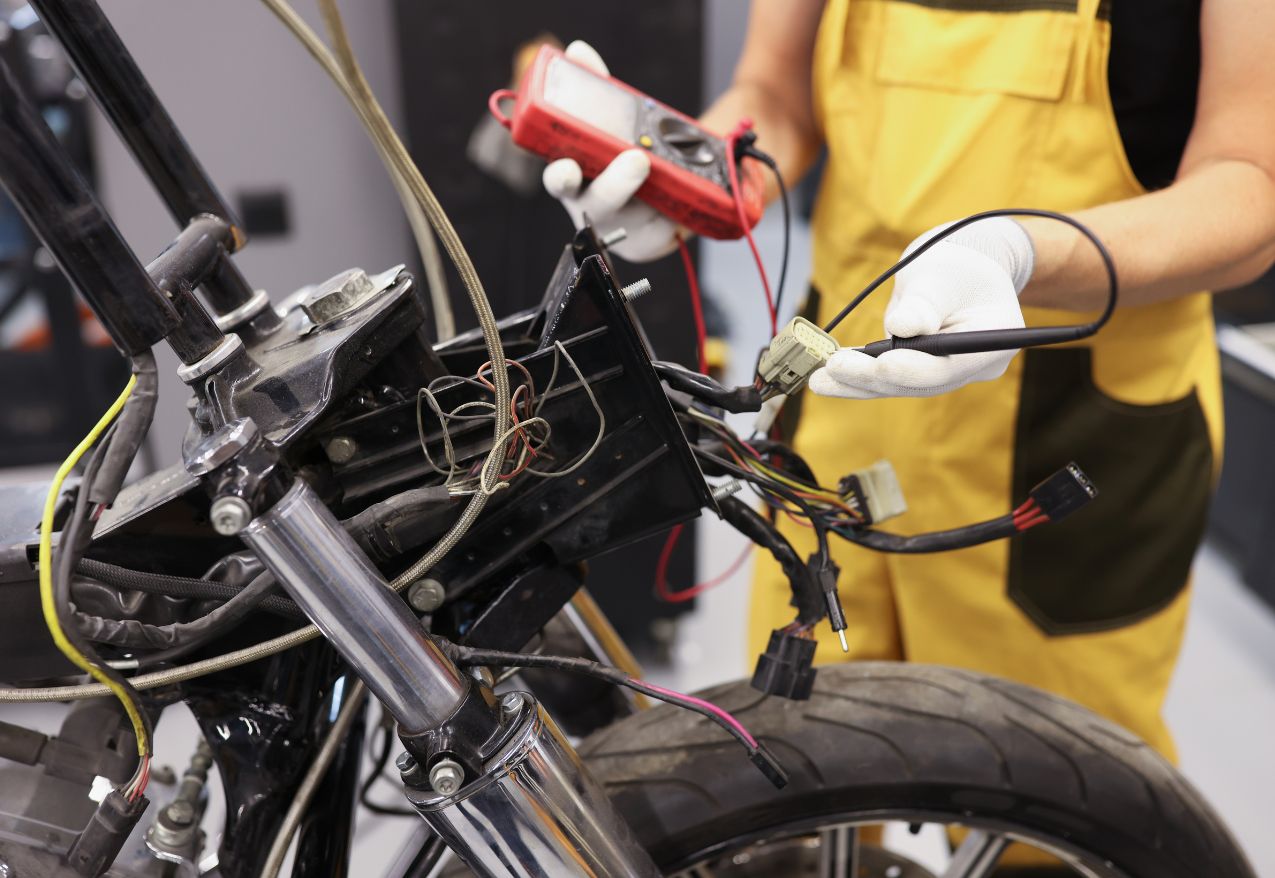Every motorcyclist knows the thrill of the open road, the wind in your hair, and the freedom that comes with riding. However, nothing can put a damper on your adventures faster than a failing motorcycle battery. Your bike's battery is its heartbeat, providing the crucial spark to start the engine and power essential electrical components.
In this post, we’ll explore common motorcycle battery issues and how to resolve them so you can keep your bike running smoothly.
The Importance of a Healthy Motorcycle Battery
A healthy motorcycle battery is vital for ensuring optimal engine performance and the longevity of your bike's electrical system. According to the Motorcycle Industry Council, battery-related issues rank among the top reasons for roadside assistance calls. Ensuring your battery is in good working condition can save you from unexpected breakdowns and costly repairs.
Common Signs of a Failing Battery
Recognising the early symptoms of a failing battery can prevent you from getting stranded. Here are some common signs to watch out for:
- Slow Cranking: The engine takes longer to turn over when you press the starter button.
- Dim Headlights: Your headlights appear dimmer than usual, indicating an insufficient power supply.
- Bike Not Starting: Despite multiple attempts, your motorcycle refuses to start.
If you notice any of these signs, it’s time to check your battery.
How to Test a Motorcycle Battery Using a Volt Meter
Testing your motorcycle battery is a straightforward process that requires a volt meter. Here's a step-by-step guide:
- Turn Off the Ignition: Ensure your bike is off to avoid any electrical surges.
- Set the Multimeter to DC Voltage: Adjust the settings to 20 volts.
- Connect the Multimeter Leads: Attach the red lead to the positive terminal and the black lead to the negative terminal of the battery.
- Read the Voltage: A healthy battery should read around 12.6 volts when fully charged. If the reading is below 12.2 volts, your battery is weak and may need charging or replacement.
Regularly testing your battery can help you catch issues before they become serious problems. A volt meter is the simplest way of checking your battery, however, there are other products on the market that will provide you will more in-depth data about the health of your battery including the Motobatt System Tester and the Motobatt Tester Mini Pro.
Troubleshooting Common Battery Issues
Identifying the root cause of battery problems can save you time and money. Here are some common issues and their solutions:
Slow Cranking
- Weak Battery: Charge the battery or replace it if it's beyond its lifespan.
- Corroded or Loose Connections: Clean and tighten the battery terminals to ensure proper current flow.
- Thick Battery Electrolyte: Check the electrolyte level and add distilled water if needed.
No Cranking
- Dead Battery: Charge or replace the battery.
- Faulty Starter Relay: Replace the starter relay if it's malfunctioning.
- Blown Fuse: Check and replace any blown fuses in the starter circuit.
Dead Battery
- Insufficient Charging: Ensure the charging system and alternator are functioning correctly.
- Excessive Electrical Drain: Identify and fix any parasitic drains that occur when the engine is off.
- Battery Age: Older batteries are more prone to failure and should be replaced regularly.
By addressing these issues promptly, you can prevent more significant problems down the road.
When to Replace a Motorcycle Battery
Knowing when to replace your battery is essential for maintaining your bike's performance. Consider replacing your battery if:
- It's Over Three Years Old: Most motorcycle batteries have a lifespan of three to five years.
- Frequent Jump Starts: If you constantly need to jump-start your bike, it’s time for a new battery.
- Physical Damage: Cracks, bulges, or leaks indicate that the battery is no longer safe to use.
Choosing the right replacement battery is crucial. Look for one that fits your bike's specifications and has the necessary cold cranking amps (CCA) and reserve capacity (RC).
Tips for Battery Maintenance and Longevity
Proper maintenance can extend the life of your motorcycle battery. Here are some tips:
- Regular Charging: Use a battery tender or charger, especially during periods of inactivity.
- Avoid Deep Discharges: Frequent deep discharges can shorten battery life.
- Clean Terminals: Prevent corrosion by regularly cleaning battery terminals with a wire brush.
- Check Electrolyte Levels: For flooded batteries, maintain the correct electrolyte level with distilled water.
- Secure Battery: Ensure the battery is securely mounted to prevent damage from vibrations.
Following these maintenance tips can help you get the most out of your motorcycle battery.
Flowchart for Troubleshooting Battery Issues
To aid in troubleshooting, here is a simple flowchart to guide you through the process based on the symptoms observed.

This flowchart provides a visual representation of the steps to take when diagnosing and resolving battery problems.
Conclusion
A reliable motorcycle battery is the backbone of every ride, ensuring that you can enjoy your adventures without interruptions. By understanding the common signs of battery issues and knowing and how to test and troubleshoot them, you can keep your bike running smoothly. Regular maintenance and timely replacements are key to prolonging the lifespan of your battery.
If you’re looking for a new battery, consider the options available at MR MOTO. We offer a variety of high-quality batteries to suit different motorcycle models. For professional battery services or further assistance, don’t hesitate to reach out to our expert team who will be more than happy to advise you on the best battery for your motorcycle.
Stay prepared, keep your battery in top shape, and enjoy the thrill of the open road!
By incorporating these tips and following the guidelines provided, you can effectively troubleshoot and maintain your motorcycle battery, ensuring a smooth and enjoyable riding experience. For more detailed information and professional assistance, consider booking a call with one of MR MOTO's experts. Happy riding!

